John Hurrell – 30 March, 2017
What the video doesn't show you - behind the scenes - is the film and camera crew, or the artist giving instructions, but it does highlight the surprising goodwill and affability the project received from local shoppers. They often wander onto the set and pose with the actors - sometimes taking selfies. Part of that may be because the German man and woman wearing the ceremonial garments were long term residents anyway or that the shoppers knew the team of people filming.
Auckland
Yuki Kihara
Der Papālagi (The White Man)
24 February - 31 March 2017
In this fascinating suite of photographic prints and digital video (that documents staging of the photo production), Yuki Kihara examines issues of cultural and historical ownership, presenting them in the face of not only indigenous Samoan and Palagi artlovers in Auckland, but also the general population of Apia, Samoa’s capital city. It is there, on those streets (in those shops, supermarkets, malls, and restuarants) that these normally provocative images were made, potentially offensive images of a European (German) couple wearing for the photo shoots the traditional regalia of Samoan nobility.
Looking at these images, Samoan viewers will remember the parts of the city they are familiar with, while those of us who haven’t been there (like me) will probably think of South Auckland communities like that of Mangere, with its extremely varied, densely packed and colourful stalls.
What the video doesn’t show you - behind the scenes - is the film and camera crew, or the artist giving instructions, but it does highlight the surprising goodwill and affability the project received from local shoppers. They often wander onto the set and pose with the actors - sometimes taking selfies. Part of that may be because the German man and woman wearing the ceremonial garments - Christian and Barbara Durst - were long term residents anyway (they might have been recognised) or that the shoppers knew (or identified with) the team of people filming. Or they may have been amused by either the Germans gal (as pre-World War 1 colonisers), or the concept of ridiculing the indigenous aristocracy, or simply loved to be in a film - any film. There is little evidence of chagrin anywhere.
Kihara‘s project was initially stimulated by a fake travel-log that ostensibly described the point of view of an observant Samoan chief who visited Europe as part of a native performance group, and who was then translated and published in 1920 by one Erich Scheurmann. Scheurmann - we now know - made the whole thing up. The chief, Tuiavii, never existed, but the book, Der Papālagi (The White Man), a romanticisation of Samoan life and culture, was a best seller. It is a similar story to that of the apparent First Nations Canadian, Grey Owl, a very popular writer of the 1900s who, after his death in the late thirties, was revealed to be Archibald Belaney. Despite his authorial deception, Belaney is now admired as a pioneer conservationist.
Belaney wasn’t German; he was English. But, the Germans perhaps do have a reputation for this sort of thing. In 2000 I visited the Lyon Biennale in east-central France, where the main poster for this international event was a photograph of a Bavarian dressed as a First People’s shaman - an image which if distributed in North America or Aotearoa today would generate much heated debate, but which in Europe would be (and was) ignored. The artists were Andrea Robbins and Max Becher, and they were presenting documentation of a festival in Germany that celebrated the travel novels of Karl May, a very popular romanticiser of indigenous North American culture who was admired by Hitler for being ‘anti-American’. (He had May’s books distributed amongst his troops.)
One wonders what would happen if Kihara did an equivalent variation of the ‘Papalagi’ project in certain U.S. cities close to First Peoples communities. It would be very hard to get a correlating population breakdown of dominance versus minority; indigenous versus colonial - but it might be possible. Yet it is hard to imagine a similar equanimity occurring in North America. My (now admittedly belaboured) point is that in Apia anyway, most people seemed amused by the staged photographic proceedings. If not entertained, then they were indifferent - and certainly not antagonised or offended. The spirit of geniality dominated.
One explanation of this is that perhaps the locals were tickled to see their own culture so admired. (They assumed the actors did it voluntarily). In other words they would have agreed with Oscar Wilde that ‘imitation is the sincerest form of flattery.’ They saw the cultural appropriation as a compliment. It made them proud to be Samoan.
So would the artist have expected this, when referencing Scheurmann in the work’s title, setting up these scenes, and approaching the Dursts to participate? Were ‘fireworks’ expected, or was what eventuated foreseen? Perhaps there was hidden rage that never surfaced in the very publically documented interactions, but which nevertheless existed and was never dissipated. Maybe the story of these images (their emotional impact - re colonialism? class? ownership? other?) has not yet run its course?
John Hurrell
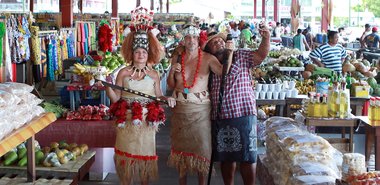
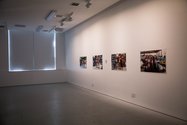
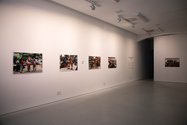
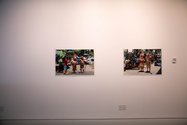
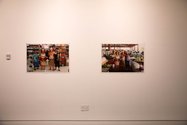
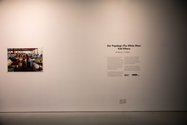
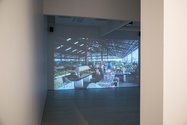
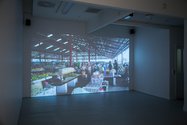
 Two Rooms presents a program of residencies and projects
Two Rooms presents a program of residencies and projects Advertising in this column
Advertising in this column



This Discussion has 0 comments.
Comment
Participate
Register to Participate.
Sign in
Sign in to an existing account.